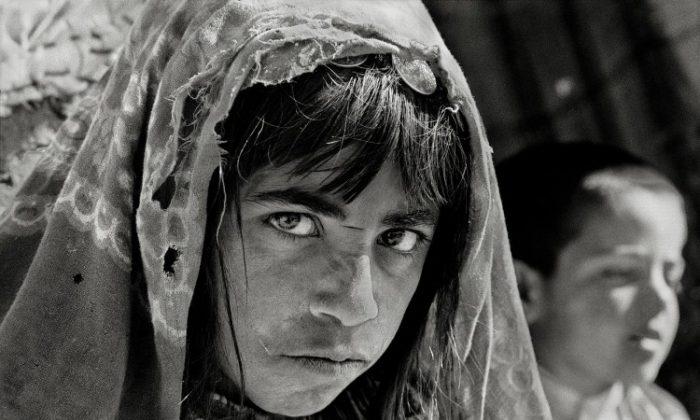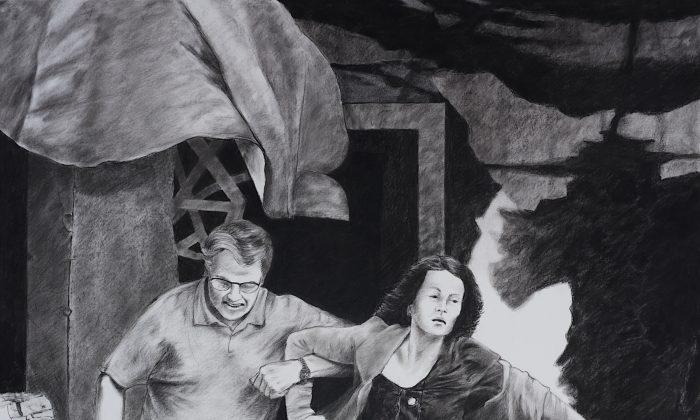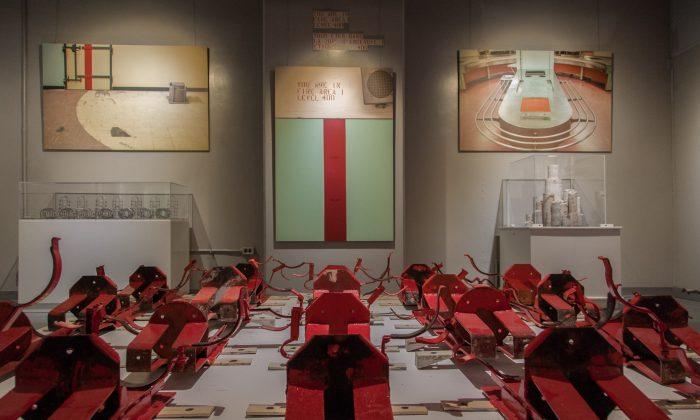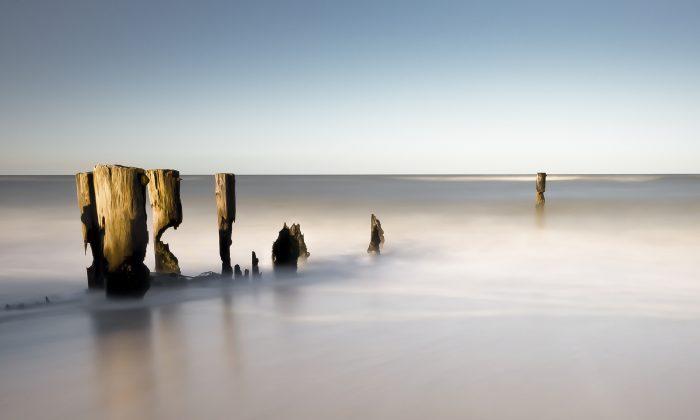OTTAWA—Photojournalist Nick Danziger’s documentary exhibition “Eleven Women Facing War” at the Canadian War Museum is intimate and intense.
The 11 women portrayed in the exhibition were photographed by Nick Danziger in war zones, initially in 2001 on assignment for the International Committee for the Red Cross (ICRC), then again in 2011 when the photographer sought out each to learn—what happened next?
The exhibition is presented as a didactic, informative narrative. Its purpose is to relate the importance of the work of the ICRC as seen in the image and voice of 11 women. The scale of the exhibition is small, the focus tight.
In Danziger’s lens, his black and white portraits are searching ones.
The visitor to the War Museum’s installation walks from one alcove to another, 11 in all, one per woman. In each of these darkened settings, there is a video with earphones, and photographs of that particular woman in 2001 and 10 years later.
The alcove walls state name and place, and narrate excerpts from the woman’s statements describing her situation. The museum’s website also includes a link to all the 2001 videos, each approximately three minutes.
Stories of triumph and tragedy
The women are known only by their first names. Sadly, their stories are not unusual. Olja in Serbia searched for her husband in 2001. She tells Danziger 10 years later that his body was found in 2002. Now she has the “solitude of reading and walking” as the focus of her life.
Amanda in Colombia told of having “joined the rebels at age 11,” then being imprisoned. Released, she met a man and had a child with him, but then he was “disappeared.” She, too, speaks of the solace of reading and writing.
Zakiya in Gaza describes the arrangements she continues to make to visit her husband every two weeks: “I am patient, and swallow all the pain,” she says. Shimaz, from the West Bank, the staff head nurse at a government hospital, still mourns the loss of the family home. Efrat in Israel says, “I want my daughter to grow up in peace.”
In 2001, Dzidza in Bosnia-Herzegovina was searching for her sons and husband; by 2010 she had learned their fate—killed in Srebenica. Mah-Bibi of Afghanistan in 2001 was a 10-year-old child begging in the streets, the sole support of two younger brothers. She died in 2005.
Of the 11 women, a few have bettered their lives in the 10-year timeframe.
Sarah of Sierra Leone, raped and abducted at 15, is now married with children. She is doing okay. Mariatou, also of Sierra Leone, whose hands were cut off when she was 13, is now a student in Toronto.
Nasrin of Afghanistan lost a leg in a land mine. She sold the family land to pay for her husband’s funeral, and in 2001 was a beggar. In 2011 she is learning to walk with a prosthetic leg supplied by the ICRC. She works stitching and mending clothing.
Quallum, also of Afghanistan, was living in a refugee camp in 2001. In 2011, we learn she has rebuilt her house, her son is in the Afghan army, and he earns enough to meet their needs. In each of these instances, the viewer understands the importance of the interventions the ICRC made in the women’s lives.
A photographer’s vision
In Danziger’s lens, his black and white portraits are searching ones. Usually, the compositions are cropped to isolate one individual because it is her story that matters. And, as narrated by the ICRC, it is their work to ameliorate the suffering of the women. In hard times, the ICRC provides medical relief, emergency rations, shelter, and help to one and all. The organization is the medium of communication in wartime between opposing factions.
What makes “Eleven Women facing War” particularly notable is its background. Of his own initiative, Nick Danziger went back to find out what happened next, and to show us what he saw with his eye and his lens. More photographs, and less text, would make this clearer to the viewer.
The Canadian War Museum’s exhibition “Eleven Women facing War” is drawn from a much larger 2011 exhibition of 120 photographs first seen in the Principality of Monaco and entitled “Guerre et Paix: Femmes dans la XX! siècle.
Nick Danziger’s black-and-white photographs on display at the Canadian War Museum are all gelatin silver prints, only the colour are digital format.
“Eleven Women Facing War” will run at the Canadian War Museum from Feb. 8 until April 21 in the Lieutenant-Colonel John McCrae Gallery.
Maureen Korp is an independent scholar, curator, and writer who lives in Ottawa. Author of many publications, she has lectured in Asia, Europe, and North America on the histories of art and religions. Email: [email protected]





